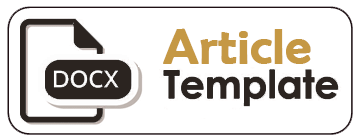Analisis Implikasi Perubahan Kurikulum Terhadap Pembelajaran PPKn Pada Sekolah Jenjang SD
DOI:
https://doi.org/10.47200/aossagcj.v3i1.1846Keywords:
Curriculum, Civic Education, LearningAbstract
In writing scientific papers based on literature studies, it is hoped that it will be able to overcome confusion over the problem of curriculum policies which often change, which are policies from the government under the pretext of the times and technology so that the curriculum must also always experience changes. The curriculum has a dynamic nature and continues to be developed or adapted according to the context and needs of students to build competencies or abilities according to the present and the future. What is needed in the educational process in curriculum development is that it is hoped that all educational academics will be able to collaborate with the community to organize socialization for all components of society, namely the role of parents, communities and schools must place needs, opinions, experiences, learning outcomes and the interests of students as curriculum development because The curriculum is designed for the needs of learners. In the subjects there were also changes in terms of the naming of the subjects which were originally Pancasila Education and Citizenship changed their names to Pancasila Education, in the contents of the content of the lesson values also added the profile of Pancasila students as strengthening character values, implementing Pancasila personality as an example in the behavior of daily life - day. By changing the curriculum, of course, it can further improve the understanding of learning material, create a new view of learning programs that should be carried out, be more flexible, concise and efficient and be able to answer challenges in the world of education in the current era of digital technology development. So each curriculum in its implementation requires evaluation every year in order to determine the level of success of the learning process of students.
References
Alhafiz, N. (2021). Analisis profil gaya belajar siswa untuk pembelajaran berdiferensiasi di SMP Negeri 23 Pekanbaru. Jurnal Cakrawala Ilmiah. https://bajangjournal.com/index.php/JCI/article/view/1203
Darmalaksana, W. (2020). Metode Penelitian Kualitatif Studi Pustaka dan Studi Lapangan. Pre-Print Digital Library UIN Sunan Gunung …. http://digilib.uinsgd.ac.id/32855/
Faiz, A., & Faridah, F. (2022). Program Guru Penggerak Sebagai Sumber Belajar. Konstruktivisme: Jurnal Pendidikan …. http://ejournal.unisbablitar.ac.id/index.php/konstruktivisme/article/view/1876
Faiz, A., Parhan, M., & Ananda, R. (2022). Paradigma Baru dalam Kurikulum Prototipe. Edukatif: Jurnal Ilmu Pendidikan. https://edukatif.org/index.php/edukatif/article/view/2410
Madani, J. E. L., & Kurnia, H. (2022). Mata Pelajaran PPKn Sebagai Dasar Penerapan Nilai-Nilai Pancasila. Jurnal Citizenship Virtues. http://jurnal.stkipkusumanegara.ac.id/index.php/citizenshipvirtues/article/view/1512
Manalu, J. B., Sitohang, P., & ... (2022). Pengembangan perangkat pembelajaran kurikulum merdeka belajar. Prosiding Pendidikan …. http://journal.mahesacenter.org/index.php/ppd/article/view/174
Raharjo, S. H., & Arisusila, I. W. (2021). Manajemen Pengembangan Profesionalisme Guru Agama Hindu Di Gugus Inti Sekolah Dasar Negeri Se-Kecamatan Kuta Utara Kabupaten Badung. Pramana: Jurnal …. http://jurnal.stahnmpukuturan.ac.id/index.php/pramana/article/view/1845
Sutrisno, E. (2021). Mengenal dan Menjadi Sekolah Penggerak. In Indonesia. Go. Id.
Yuniarto, B., Maryanto, M., & Habibi, A. (2022). Pendidikan Pancasila Dalam Kurikulum Merdeka. Jurnal Sosial Sains. https://sosains.greenvest.co.id/index.php/sosains/article/view/522






